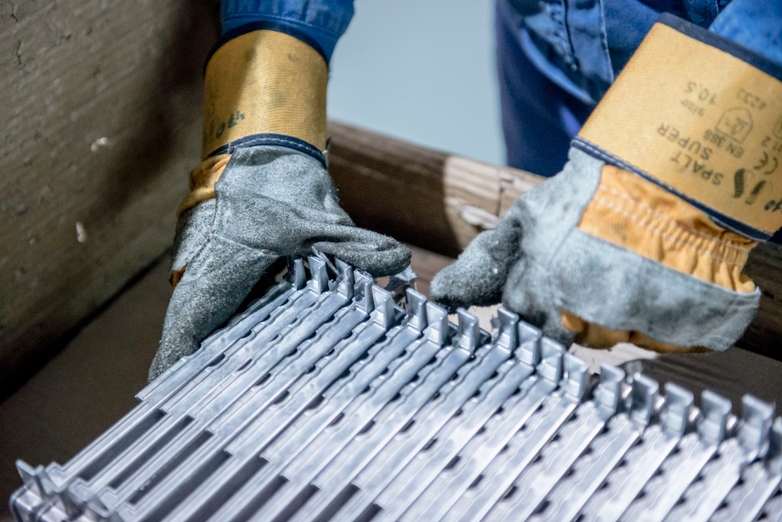From utility and functional grade to commercial and consumer grade coatings—including decorative finishes—there are numerous surface finish and plating options to choose from for your next project. Before selecting a surface finish for your part’s optimal performance, make sure you’re informed about the benefits, process, and cost of each option.
We’ve compiled a list of frequently asked questions about surface finishes from our webinar, Surface Finish 101. If you’d like to learn more about surface finish options and the best practices of choosing an effective surface finish, register for the full webinar or explore the Dynacast Finishing Selector.
What material does E-coat apply to?
E-coat can be applied to almost anything. It can be applied to aluminum, zinc, magnesium, steel, and more. It is a very robust finish.
What does PVD stand for?
Physical Vapor Deposition. PVD is a batch process where there is a controlled explosion and the target metal is vaporized and transferred to the surface of the component. To use this process, the part must first be chrome-plated and any and all liquid within the part must be removed. It is a very expensive process but has a lot of different colors available. Its physical properties are tremendous, it is extremely durable, but everything has to be just right to get the desired effect and avoid damaged parts.
What is the best pre-treatment for prepping aluminum castings?
Shot blasting aluminum castings prior to finish is most common. E-coating would be a great economical operation. Chemical film is another treatment. It acts as an excellent primer for wet coat finishes on aluminum.
What do salt spray hours mean in real-world applications?
There is little evidence indicating a positive correlation of salt spray hours to what's going to happen to any given part over a period of time in the real world. Typically, with automotive interior parts, you're looking at around 48 hours. However, for exterior applications in service condition, it can be up to a thousand hours. There is also something called copper-accelerated acetic acid salt spray (CASS), which simulates a lifetime of use in a short period of time. CASS is different from natural salt spray.
How much material is removed during the shot blast process?
During the shot blast process, the surface of a part is peened off, no part material is removed or lost at all. This process is typically used to soften parting lines or eliminate any sharp edges that could impact your line workers in the assembly process. It can also be used to give a uniform finish.
Is black plating different than chrome plating?
No. Chemical companies have come up with a variety of ways and chemicals to make what otherwise would be the typical shiny chrome finish into what is called black chrome or black nickel. You can get that black chrome look with chrome plating. You can also get other colors, such as an indigo chrome. However, not every chrome plater offers black or colored chrome, so as a result, it's generally more expensive than bright chrome.
How does E-coat differ from powder coating?
E-coating is a dip process; powder coating is a spray process. E-coating is much more fluid and is able to reach all corners and pockets of a part, whereas powder coating can sometimes lack in this regard. E-coating and powder coating are both rack processes. With e-coating, the entire rack is dipped, whereas a rack design and placement is more important on a powder coat to ensure equal coverage on all sides of a part. Oftentimes, especially if it is an exterior application, a part will be e-coated then followed by a powder coat
